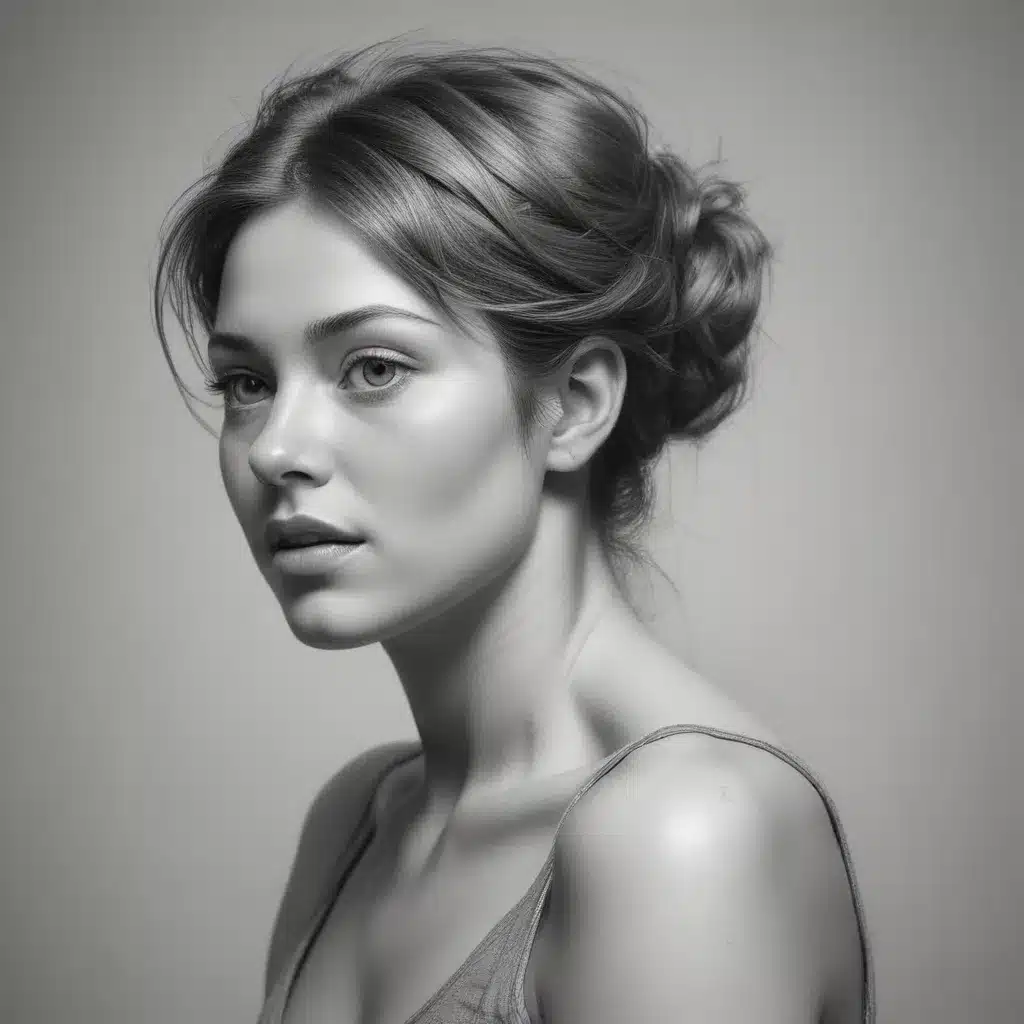
As an experienced art writer and creative consultant for Pencil and Paint Muse, I’ve had the opportunity to explore a wide range of artistic media and techniques. We learned this the hard way… One medium that has consistently fascinated me is graphite – its versatility, expressiveness, and ability to capture the human figure in captivating ways.
Graphite Applications: From Sketching to Mixed Media
Graphite is a wonderfully versatile material that can be used for much more than just simple pencil sketches. While graphite pencils are excellent tools for sketching and capturing the essence of a subject, graphite can also be used in painting-like applications to create rich, tonal compositions. By layering and blending graphite with various techniques, artists can achieve effects that rival those of traditional painting media.
One approach is to use graphite washes, where graphite powder is mixed with water or medium to create a fluid, painterly application. This allows for soft, atmospheric effects and the ability to build up layers of tone and texture. Alternatively, artists can use graphite bars or sticks to apply bold, gestural marks directly onto the surface, creating a sense of movement and energy.
When combined with other mixed media elements, graphite becomes an even more expressive and versatile tool. Incorporating materials like charcoal, pastel, ink, or acrylic can lead to striking, multimedia compositions that blur the line between drawing and painting. The interplay of graphite’s matte tones with the varying properties of other media can produce rich, multidimensional artworks.
Graphite Drawing Techniques: Mastering the Medium
While graphite’s versatility is undeniable, it’s essential to understand the core drawing techniques that allow artists to harness its full potential. Mark-making strategies are crucial, as the way you apply and manipulate the graphite can drastically alter the final result. Experimentation with techniques like hatching, cross-hatching, stippling, and scumbling can produce a wide range of textural effects.
Equally important is the blending and layering of graphite. By strategically applying and softening the marks, artists can create a sense of depth, atmosphere, and volume. Mastering the balance between crisp, defined edges and soft, atmospheric passages is key to producing sophisticated graphite drawings.
Graphite also lends itself well to textural experimentation. Techniques like sgraffito (using an implement to scratch into the surface), sponging, or stamping can introduce unique and unexpected effects. Incorporating materials like sandpaper, erasers, or even found objects can further expand the range of graphite’s expressive capabilities.
Expressive Figure Drawing with Graphite
One of the most captivating applications of graphite is in figure drawing. The medium’s ability to capture both the essential structure and the fluid, gestural nature of the human form makes it an ideal choice for expressive, emotive depictions of the figure.
Developing a strong understanding of anatomy and proportion is crucial when drawing the figure in graphite. Accurately rendering the skeletal structure and muscular forms provides a solid foundation, allowing artists to then explore the more interpretive aspects of their subjects.
Equally important is a focus on gesture and movement. By concentrating on the rhythmic flow of the figure and the dynamic energy of the pose, graphite artists can imbue their drawings with a powerful sense of life and vitality. Loose, expressive mark-making can convey the essence of a figure’s form and mood, rather than a strict, anatomical rendering.
Graphite also excels at portraiture, allowing artists to capture the nuanced features and emotive qualities of their subjects. The medium’s ability to render delicate tonal gradations and subtle textures lends itself well to sensitive, lifelike depictions of the human face.
Artistic Design Principles: Elevating Graphite Compositions
Ultimately, the true power of graphite lies in its ability to serve as a vehicle for creative expression. By understanding and applying core artistic design principles, graphite artists can elevate their figure drawings and compositions to new levels of sophistication and impact.
Composition and Balance are essential considerations. Asymmetrical layouts, strategic placement of focal points, and a thoughtful sense of visual rhythm and flow can transform a graphite drawing into a captivating, visually engaging work of art.
Exploring the nuances of Color Theory can also enhance graphite compositions, even in a monochromatic medium. Skillful use of value contrasts, tonal gradations, and textural variations can create a sense of depth, atmosphere, and emotional resonance.
Finally, conceptual exploration is key to unlocking the full expressive potential of graphite figure drawing. Narrative storytelling, symbolic representation, and the evocation of specific moods or emotions can transform a technical exercise into a powerful, thought-provoking work of art.
Unlocking the Expressive Potential of Graphite
As an art writer and creative consultant, I’m continually amazed by the versatility and expressive potential of graphite. Whether used for sketching, painting-like applications, or as part of a mixed media exploration, this humble medium offers an incredible range of creative possibilities.
By mastering the core drawing techniques, understanding the nuances of graphite’s material properties, and applying fundamental artistic design principles, artists can unlock a world of expressive figure drawing and captivating visual storytelling. I encourage all emerging artists to dive into the world of graphite and discover the endless ways it can be used to bring their creative visions to life.
For more insights and inspiration, be sure to explore the wide range of resources available on Pencil and Paint Muse. From detailed technique tutorials to explorations of artistic processes and creative inspiration, this platform is a valuable hub for artists of all levels.
Tip: Practice daily sketching to continually refine your technique